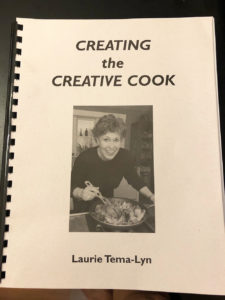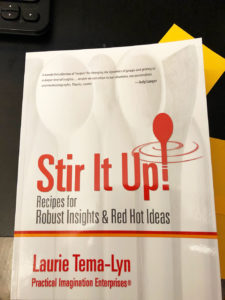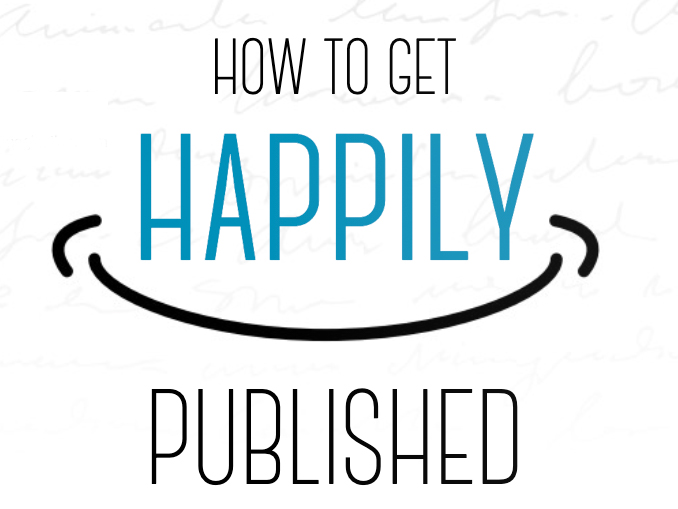My First Attempt Failed—but It Was a Great Learning Experience
In spring 1995, I left IdeaScope Associates, the strategic innovation consulting firm I had co-founded twelve years prior. Burned out, I wanted to recharge by spending time on a passion project—a cookbook that I had been working on sporadically over several years. I wanted to interweave my love of cooking delicious, healthy foods with my experiences in creative facilitation.
Creating the Creative Cook: An Almost Vegetarian Cookbook for Almost Brave Cooks (CTCC) brought together my thinking about the value of playing with food, tasting it first in the imagination, using fresh ingredients, working with color and a varied palette of herbs and spices, and many more ideas. The 167-page book ultimately included 67 recipes that I created, each with variations and several creative exercises to spark new thinking.
 I Spent Two Years Trying to Get It Published
I Spent Two Years Trying to Get It Published
I followed the steps that my research suggested were critical for a first-time author to be given a chance at a publishing contract. I scoured libraries and bookstores for anything that might be competitive to my book concept, and I couldn’t find anything. I identified the publishers whom I thought would be a good fit. I retained a publishing consultant—a highly regarded expert who urged me to change the name and change the concept because “no publishing house would know what to do with me.” I spent weeks crafting detailed book proposals following all the recommended steps and mailed hard copy packages to a slew of publishers and agents in hopes of a positive reply. While I received several letters (which I was told was unusual at the time!), the bottom line was that no one wanted to take a chance on this unproven book concept. By this time, I had launched Practical Imagination Enterprises and was now immersed in a healthy and growing market research business.
Yet I Didn’t Want to Give up on My Book!
With the help of a friend who created an attractive Word template for recipes, I reformatted all my recipes and exercises. I asked another friend, a grammar ace, to review the manuscript. I asked friends and family members to read through drafts and test out my recipe ideas. In 1997, I printed the first edition of Creating the Creative Cook at Staples and took copies to a dozen independent bookstores and health food stores in the northwest Boston suburbs. Everyone took a few copies to sell; a few did repeat orders. I designed Creative Cook introductory workshops for the stores and in-depth, hands-on workshops for small teams in my home. Over the years, I caught some errors in the book, tweaked some recipes, and did three reprints. I sold approximately 250 books and probably gave away 100 more to friends, family, and fundraisers over the years. While this was not a business, I thoroughly enjoyed doing it. I have a handful left in my closet and have started another cookbook writing project—partly inspired by my research on “Dinner in the Age of COVID-19” that I conducted in summer 2020.
Fast Forward for a Vastly Different Book Publishing Experience!
Just before Thanksgiving 2010, I was driving home from a QRCA Philadelphia Chapter meeting when a past client asked if she could “pick my brain” about some creative exercises that she could use for an upcoming project. Before we said goodbye, she asked: “Isn’t there a good book for this?” At three o’clock that morning I knew it was time to write my second book.
I awoke that night, walked upstairs to my office, and wrote a very short note to Jim Madden, publisher of Paramount Market Publishing, Inc., whom I had met at many QRCA conferences and I knew carried the most relevant titles for our community.
The essence of my email was this: I felt a calling to write a book containing the creative exercises that I have been using for decades to inspire fresh thinking when facilitating team meetings or qualitative consumer sessions. I thought Paramount was the right publisher for my book. I was an active member of QRCA and a frequent presenter at local and national conferences. Could we talk?
You can imagine my shock when a few days later I received an email back saying: Yes! When could I have a manuscript completed?
WHOA!
Well, now I had to get on it. I had to specifically focus on what I wanted to say, how I wanted to structure the book, and how my book would be different from others in the market.
I responded that I was thrilled and wanted to take the next month to work up the specific book concept. I promised I would have something to him by December 18, 2010. I knew that the deadline for myself was necessary, as I was still immersed in fourth-quarter research projects.
The next few weeks were so busy with work that I didn’t devote any obvious energy to the book project. But deep inside my brain, a concept was taking shape. The day before my self-imposed deadline I knew that I had it. My first book was a cookbook with an overlay of creativity. This book was going to be a business book using a cookbook structure with activities organized by type (i.e., ice breakers instead of appetizers). Paralleling my cookbook, it would be conversational, containing stories behind the exercises and include coding for materials needed, set-up time, run time, and degree of difficulty to execute the exercise. As for a timeline to deliver the manuscript, I told Jim that once I started writing, it would take me three months, and if I couldn’t write it by then, I didn’t deserve to write it. With my decades-long background in music, art, theater, and business innovation, I felt these exercises were so much in my bones that it was entirely doable.
The Writing Commenced
We were visiting my daughter in Boston for the New Year. At five o’clock in the morning, on January 1, I sat down at my laptop and wrote the first ice-breaker exercise in forty-five minutes. That was the start of the pattern to my writing process. I awoke before dawn (much earlier than my usual wake-up time) almost every day and wrote for an hour or less—each day writing up a different activity or refining an earlier piece, with section headers taking more time. There were many mornings when the copy poured out of my brain as if the words came together while I slept, and I just had to word process them and check for errors! My husband (who is in a different profession) was my first reader. He reviewed drafts to see if what I had written was accessible and made sense. Every few weeks I sent my work to Reva Dolobowsky, a dear friend and frequent collaborator, to review. She had lived through many of the projects I wrote about and is a strong editor. She could fill in a missing piece or correct a faulty memory.
Some Days, the Words Wouldn’t Flow
As a strongly self-motivated person, I’ve learned three things that help me when this happens:
- First, just show up! Sit down at the computer and start writing for a bit of time, and get whatever comes out on paper. During the process of an internal “brain dump,” I may see the clarity of what I want to communicate.
- Get outside and take a walk in nature. A quiet walk focusing on my breathing and enjoying the beauty of the world around me does the trick.
- Put a “Creative Inspiration Day” on the calendar. I schedule a day to get out of the office. A day at the beach or, pre-COVID, a day wandering around Manhattan, popping into galleries or museums, people watching on the subway or at a café, or having lunch with a friend always produces some new thinking that I can apply to whatever task is awaiting me back in the office—whether writing a marketing proposal, a discussion guide, or a piece for my book.
 April 1, 2011: I Delivered My Completed Manuscript to Jim
April 1, 2011: I Delivered My Completed Manuscript to Jim
While the editorial team reviewed the material, I invited my external board of friends and family to help me with a naming session because I didn’t quite have the juicy name that I wanted for the book. My working title was Amuse-Bouche. The French term literally means “mouth amuser,” like an hors d’oeuvre which is offered as a prelude to a meal and gives a glimpse about the chef’s style. I had used the term in presentations on incorporating creativity into research and for a 2009 article for VIEWS. While I love the term, I wanted something more comprehensive for the book. We brainstormed; I let some possibilities percolate until I believed I had the right title—Stir It Up!
I had expected to go through some rewriting. I was surprised that my manuscript was accepted and was in great shape with hardly a word changed. What proved more difficult was the cover. The graphics team created a dozen beautiful designs, but I didn’t believe that any were quite right. Fortunately, my friend and designer Bruce Duhan suggested an alternative approach which became the final image. The book was published on June 11, 2011, a lightning-fast process from concept to completion.
Getting Published Is Just the Beginning!
Any author knows they must help support the publisher’s marketing efforts. Paramount, while a small organization, is excellent at conference marketing and spreading the word through frequent email communications. Jim has a good handle on the competitive arena and identified books that were complementary to others in his portfolio. He uses smart pricing, promotions, and bundling to help sales.
Author Investment in Time and Money Is Essential
In my self-publishing cookbook experience, I easily spent at least $2,000 in printing and mailing proposals, editorial consulting assistance, cover photography, book printing, and mailings. For Stir It Up! I purchased 200 books at the onset and have purchased additional copies over the years. I give books away at QRCA events and other professional networking opportunities. I send books to clients and to prospects who may be unsure about my methods or credibility. While I can’t directly trace a book sold to a consulting gig booked, there is no doubt that my investment has been recouped many times over.
I am still active in promoting the book, though a bit less so than the first years after publication. Of course, I’ve covered the basics—including mentioning it in articles and presentations, and posting to my website, LinkedIn, and Facebook. I’ve attended every QRCA annual conference since publication and am delighted to answer questions and autograph copies at the Paramount booth.
Almost ten years later, Stir It Up! continues to sell. Why? Jim credits this with the content being “evergreen” (nothing in it dates the book). How-to books are quite popular. The format makes the book extremely useful. The book has a specific audience of facilitators and moderators in mind, and I am still actively engaged in the industry.
I am grateful that I have been able to offer some of my experiences and practical approaches to help others be successful at their craft. I want readers to use and abuse the book—jot down notes and dog-ear pages. Readers around the world have sent me photos of doing just that! This makes me feel satisfied that I have done my job; it makes me smile.
Lessons Learned
- Write about what you know and love, and share with others.
- Be sure that you are ready to put your content out in the world; be prepared for those who will copy your ideas.
- Write when you feel compelled to write or make it a practice to sit down and write on a regular schedule, even if it’s just a short amount of time every day.
- Involve a team of close associates—friends, family, business colleagues whom you trust—to give you encouragement and provide honest feedback and specific help in areas where you may need it.
- Be clear about defining your target audience.
- Identify your ideal publisher(s) and get to know them and their catalog.
- Before you sign a deal with a publisher, try to speak with others who have worked with them so that you know what to expect.
- While you should take advice from experts and others, ultimately it is your baby, your book. So, unless you are primarily motivated by the expectation of making a lot of money (and unless your name is J.K. Rowling, that’s unlikely), don’t compromise on what you want to say!
- Identify what you are willing and able to do to help market your book.
- Enjoy the process and your creativity!





Be the first to comment